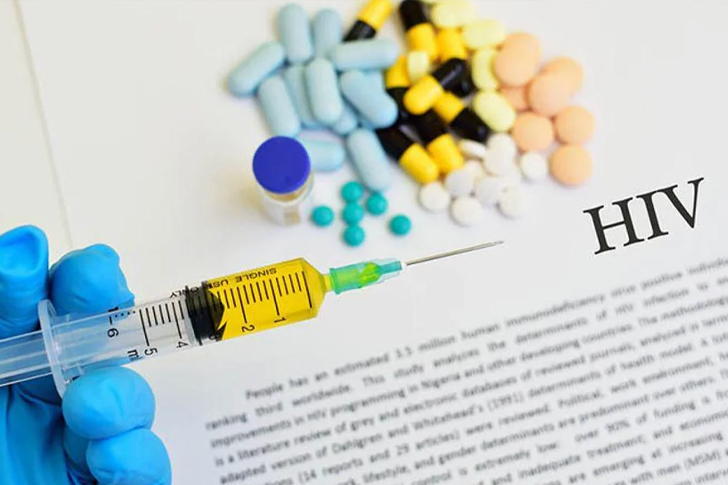Understanding HIV: Five Essential Facts
HIV (Human Immunodeficiency Virus) is a significant global public health issue that has claimed millions of lives over the decades. Despite advances in science and improvements in healthcare systems globally, the battle against HIV continues with significant efforts needed to reduce its spread and impact. This article explores essential facts about HIV that are crucial for broadening public understanding and enhancing informed health decisions.

1. Understanding HIV and Its Impact Globally
HIV is a virus that attacks the body’s immune system, specifically the CD4 cells (T cells), which help the immune system fight off infections. If left untreated, HIV reduces the number of these cells in the body, making the person more vulnerable to other infections or infection-related cancers. Over time, HIV can destroy so many of these cells that the body can’t fight off infections and disease, leading to the most advanced stage of HIV infection: Acquired Immunodeficiency Syndrome (AIDS). According to UNAIDS, as of 2021, approximately 38.4 million people globally are living with HIV. Despite its high prevalence, advancements in medical treatments have allowed many HIV-positive individuals to lead long, productive lives.
2. Transmission Paths and Prevention Strategies
One of the most critical pieces of information regarding HIV is understanding how it is transmitted. HIV is transmitted through bodily fluids such as blood, semen, vaginal and rectal fluids, and breast milk. The most common ways to contract HIV are through unprotected sexual intercourse with an infected partner, sharing needles, syringes, or other injection equipment, and from mother to child during pregnancy, childbirth, or breastfeeding. It is crucial to debunk the myth that HIV can spread through casual contact, saliva, or mosquito bites. Preventative measures include using condoms during sex, taking pre-exposure prophylaxis (PrEP), a medication for people at very high risk for HIV, and using clean needles. As of the latest data, around 85% of pregnant women with HIV, as per UNAIDS 2021 report, have access to antiretroviral therapy (ART) to prevent transmission to their children during childbirth.
3. Advances in HIV Treatment
The development and improvement of antiretroviral therapy (ART) have been a game-changer in the fight against HIV. ART works by keeping the virus from replicating within the body, helping protect the immune system and preventing the progression to AIDS. According to research findings, the effectiveness of ART in suppressing the viral load to an undetectable level also means that the virus cannot be transmitted through sexual contact. This concept known as ‘U = U’ (undetectable equals untransmittable), has been a monumental finding in the fight against HIV. Globally, 73% of all people living with HIV were accessing ART in 2021. Continual advancements in treatment options emphasize the importance of regular medical assessments and adherence to prescribed medical regimens for people living with HIV.
4. Societal Impact and Challenges
HIV/AIDS has significant social implications, as it affects the most productive age group, leading to reduced labor supply and increased healthcare costs. Stigma and discrimination against people living with HIV remain rampant, which can lead to psychological and social issues such as isolation, depression, or anxiety. It is crucial for workplaces, educational institutes, and healthcare providers to promote a nondiscriminatory environment where everyone can feel safe and supported. Awareness and education about HIV can help break the stigma and discrimination that many people face. In response, global organizations such as the World Health Organization (WHO) advocate for ‘Zero Discrimination,’ promoting equality in healthcare and beyond.
5. The Importance of Getting Tested
Knowing one’s HIV status provides crucial information that is beneficial not just for individual health but also for public health. Early testing and diagnosis can lead to timely treatment with ART, which can prolong life, reduce the risk of HIV transmission, and significantly improve quality of life. Despite the benefits of early diagnosis, about one in five people living with HIV are unaware of their infection. Therefore, healthcare services globally encourage regular HIV testing as a part of standard health examination programs, especially for individuals at risk. Many areas offer free or low-cost testing services, making it accessible to a wider population.
The battle against HIV/AIDS is not just about the medical interventions but also about overcoming social prejudices and promoting a deeper understanding of the virus. Through ongoing education, scientific research, and community support, there is hope for reducing the spread and impact of HIV. As we continue to foster a non-judgmental and supportive environment, let’s also aim for broader accessibility to preventive measures and treatments, moving a step closer to a world without AIDS.







Recent Comments